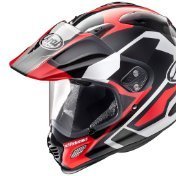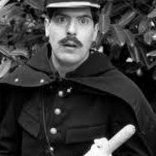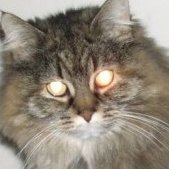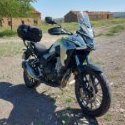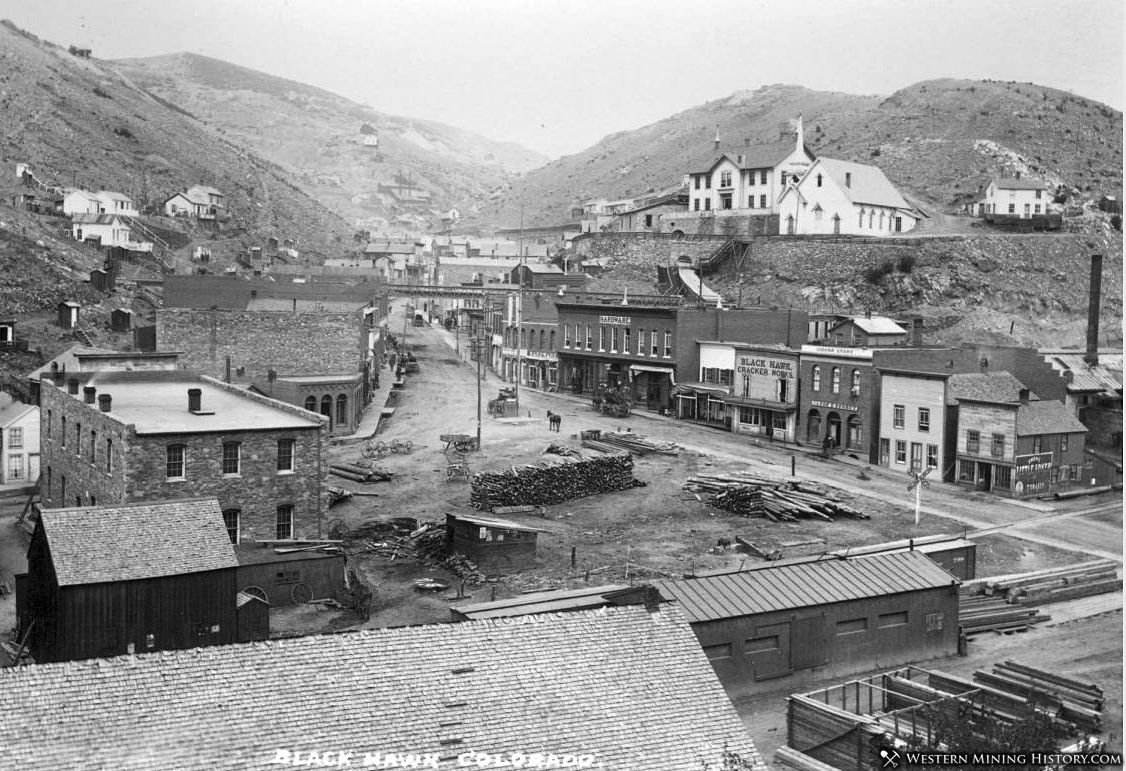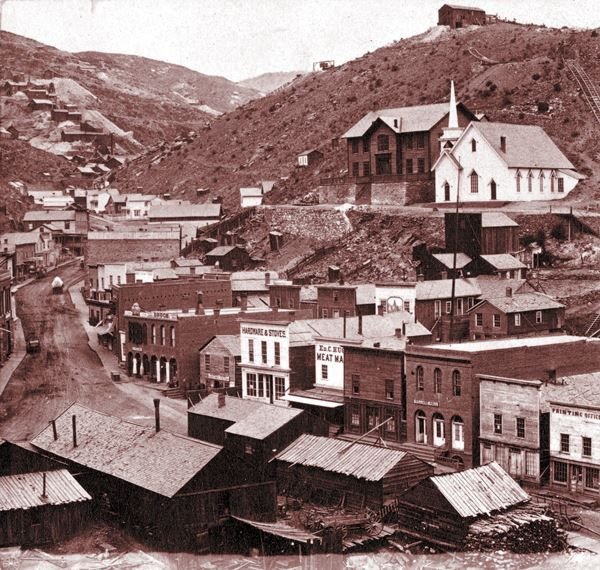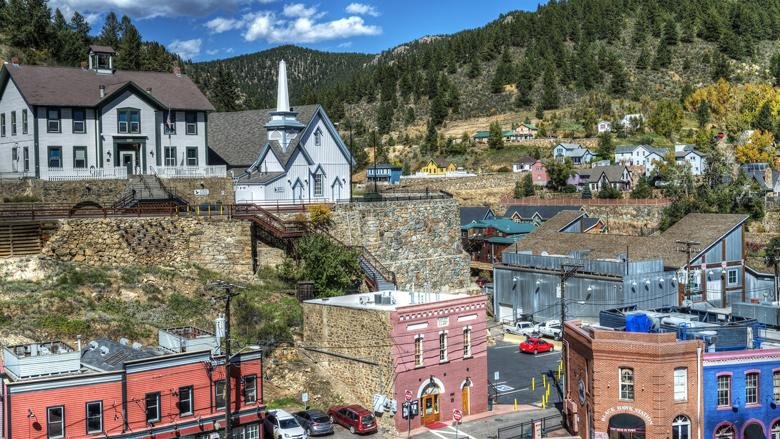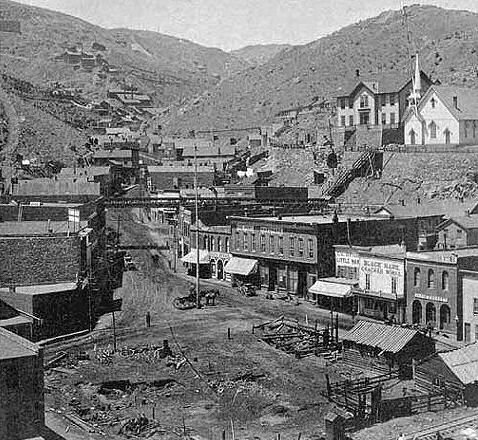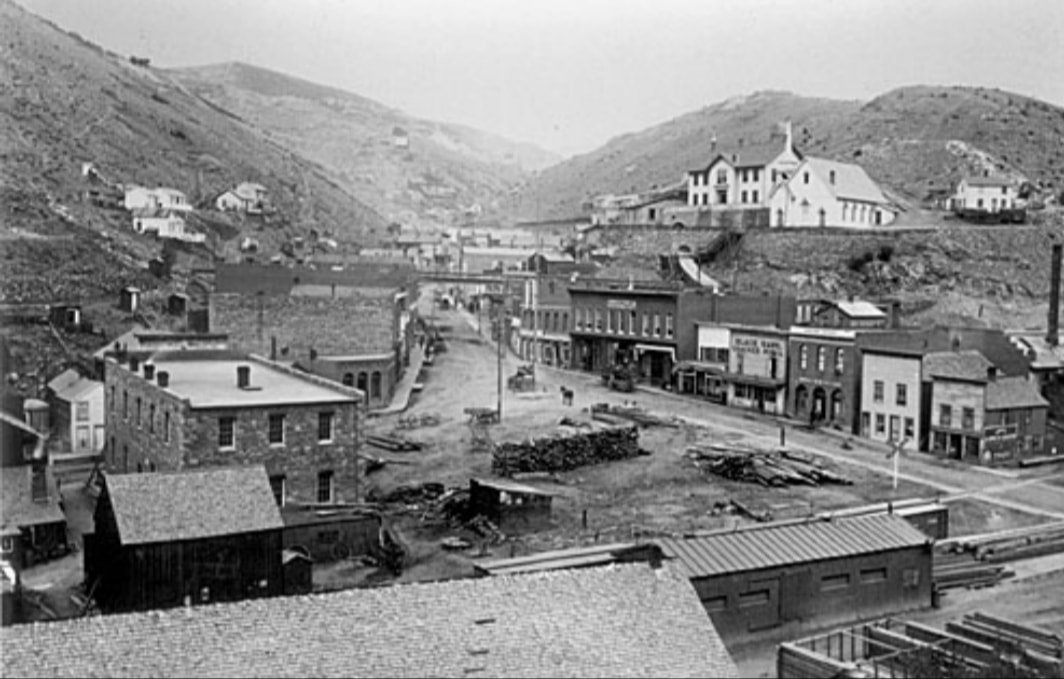Leaderboard
Popular Content
Showing content with the highest reputation on 18/06/20 in all areas
-
With sound track from youtube, the words said are not fit for a civilized buntch like you lot to hear!! I was not best pleased when suddenly the road was no more black and smooth... nor were the Pirelli Supercorsa...6 points
-
5 points
-
My presemce has been equested and required at work tomorrow, but I had to pick N01 up from the physio at 16h00 so the afternoon was pretty screwed by the time I could get out with the bike, but I squoze in a last ride before real life restarts. having not planned anything and not wanting to waste time doing so I just did one of my "box the compass" rides ie ride north for half an hour ( west of north in this case) then turn left and ride west for half an hour, then turn laft again to ride south for half an hour and left again for a half an hour... not being too particular about the time and only roughly the direction, I just take the next promising looking road the looks like it goes the right way, found some crackers today. I said the other day that I often come across these, this one was again in the middle of nowhere, down a dirt track somewhere out towards Aillant sur Tholon. " eternel souvenir of the resistant CHAPOTIN Henry of AUGY, chief warrant officer, shot by the gestapo *th August 1944 at the age of 19." up across the tops, dodging the rain clouds I really should have thrown that bloody orange sign in the ditch before taking this photo! Back in the sunshine and into the woods found a nice country retreat for my retirement it was starting to get late , gone 19h30 already so I headed for home with no more photo stops. did about 130k in all, just bimbling around.3 points
-
3 points
-
That's a proper road, tarmac is overrated. Can we hear the swearing next time , makes it more exciting ?3 points
-
If it is anything like Portugal was during confinement, having a lot of people bored out of their minds at home looking at the "news" on tv all day, and the terrible quality of sensationalist shit that passes as tv reporting in a period when not many new things happen everyday, there's no soccer to keep the poor of spirit entertained either, it is easy for the mix of all this to be a dangerous result. Edit, did that make sense?2 points
-
2 points
-
2 points
-
2 points
-
2 points
-
I think that colour combo does allot to hide the hideous nature of that design.1 point
-
1 point
-
Battle of the butt ugly, when will Japan learn, hire a fuckin Italian to design the looks, then make Japanese workers, engineer and build the fucking thing.1 point
-
Oh yes......it worked out well in the end! And probably Spain is a better fit for me than France in terms of the temperament and nature of the people!1 point
-
Gotta keep them foreigners out, ya know. Will try a copy and paste... Parked in the Past: Early days in Como bespoke a rowdy coal-mining railroad hub Laura Van Dusen, Flume correspondent Jan 3, 2015 On Sept. 29, 1881, John Lyons killed James Donley inside this saloon. The decorative diamond entrance was added later in the building’s history. It still stands at 6th and Rowe streets in downtown Como. Laura Van Dusen/The Flume This Como band from about 1900 and others like it entertained at Fourth of July parades and other events in Como’s early years. Courtesy Park County Local History Archives, source: Robert Craig The narrow gauge Denver, South Park & Pacific Railroad had merged into the Colorado & Southern by 1900 when this photo was taken. As early as 1879, 20 incoming and outgoing freight trains per day rode the rails through Como. Courtesy Park County Local History Archives, source: Howard and Freda Mason Facebook Twitter Email Print Save Como, 10 miles north of Fairplay on U.S. Highway 285, is a sleepy town today with less than 25 fulltime residents. Back in its early days though, it was a different story. The Fairplay Flume of Nov. 10, 1881, said, “The state of society now existing at Como is about as bad as can be imagined,” and warned residents to take control. In its first few years, from mid-1879 through 1885, four men were murdered within the town of Como and six more died in accidents. The employment contractor for the South Park Coal Mines was severely beaten in the Como War in 1879 and luckily survived. Still, the town prospered. A large school was built on a hill above town and churches of several denominations held weekly services. Dances sponsored by the Como Social Club provided entertainment for its upstanding citizens. They were held every other Friday evening, at locations such as the school house, the Como and Gilman Hotels, and the town hall. It was the most populated place in the county in the early years and talk in 1884 proposed moving the county seat from Fairplay to Como. Buildings still standing in Como today date from those first years, including the depot, the roundhouse, the elementary school, the Catholic Church and Montag’s Saloon. Historical restoration of the Como Depot was completed Oct. 8; the restoration prompted a look back at Como’s early years. Magic City A story in the July 17, 1879 Flume, describes the “Magic City of Como that has risen in thirty days.” That’s when the Denver, South Park & Pacific Railroad topped Kenosha Pass and made its way past Jefferson to Como. The Flume called Como “the liveliest town of its size in the state.” There were 60 or 70 tents used both as residences and businesses and up to a dozen wooden structures. The main business was the railroad. With up to 20 incoming and outgoing freight trains per day and with the activity of loading and unloading, it was undoubtedly noisy. From Denver, the trains carried general merchandise to augment a growing population, hay and grain for increasing livestock herds, and coke (a type of fuel derive from coal or petroleum) as fuel for the machinery that was also freighted to the end of the line. Gold and other minerals were transported back to Denver. Coal, from rich reserves at both Como and King (a town about two and a half miles southeast), was hauled back to Denver and also used to fuel trains at the Como-based railhead. In 1880, the Denver Ice Company shipped ice from Lake Como on DSP&P cars. In the first month of its existence, passenger travel to and from Colorado’s capital to Como was considered heavy, with up to 20 people per day traveling in each direction. Early businesses Business was booming from the first month of the town’s existence. Three freighting companies operated in early Como. They transported goods on wagons and sold groceries, clothing and general merchandise on the side. One freighter dealt in fresh fruits and vegetables, probably a welcome commodity in the high-elevation mountain town. Ed’s Restaurant, the O.K. Restaurant, the South Park Railroad Eating House and A.C. Edwards’ dining hall welcomed customers with meals any time of the day or night. In a tent above the permanent wooden structure of Ed’s Restaurant was Hamilton’s barber shop. In its first years Como had a meat market, a livery stable that also sold lumber, a harness shop, clothing and general merchandise stores, one bakery, two stage lines, a billiard hall, a few hotels and at least six saloons. Some saloons had a relaxed atmosphere, like the Club House, billed as “a place to spend a quiet hour and enjoy a glass of Milwaukee or Budweiser beer,” and the Gold Room, “a neat and orderly house.” Others attracted a more boisterous crowd. One saloon described at length in the July 17, 1879 Flume was Dodge’s Footlights and Varieties. It claimed order was kept and police were not necessary, but also said the establishment was “bound to make fun for the boys.” The saloon consisted of a pavilion, 33 feet by 80 feet, with an attached 18-foot by 30-foot tent and a 25-foot-long bar. The dance floor took up half the tent where “many hundreds congregate every night” dancing to piano and guitar music. Games of chance played in the saloon included high ball poker, roulette, twenty-one, faro, chuck-a-luck (played with three dice), and two games for which references could not be found – thimble wheel and the mustang game. Montag’s Saloon was another early drinking establishment in Como. It is still standing on the corner of Sixth and Rowe streets. On Sept. 26, 1881, it was the scene of one of the first murders in Como. Murder at the Montag The Flume of Sept. 29, 1881 said that James Donley (or Donneli) and John Lyons were both at the saloon when one of Donley’s friends hit Lyons. Lyons told the friend not to do that again and then left the saloon. Lyons returned a short time later and encountered Donley. A fight broke out between Donley and Lyons and they “grappled and rolled together on the floor.” Soon it was a free-for-all as several other men joined in the fight, “rolling on the floor together,” according to the Flume story. During the fight, Lyons pulled out his revolver, fired it and hit Donley. Nobody believed the shot would prove to be fatal. Donley was taken to a Denver hospital on the train and Lyons was jailed in Fairplay. Donley died soon after, apparently from the wounds, although Lyons said the victim had a “foul disease, which caused death as much as his wound.” Lyons was held at the Park County jail before his trial where another man, Fred Dier, attempted unsuccessfully to help Lyons escape. At the trial a jury could not decide on a verdict but Lyons was returned to jail, apparently for the attempted escape. Dier was also held. In June 1882, both Lyons and Dier were shackled together with ball and chain doing yard work on the courthouse lawn. There was no guard present and it appeared the two “had provided themselves with a key” to unlock the anklet, according to the Flume of June 29, 1882. They escaped into a thicket of underbrush and were not seen or heard from again. Deadly argument The very first recorded death by gunshot in Como happened on Dec. 9, 1879, according to the Dec. 11 and 12, 1879, editions of the Rocky Mountain News. J. W. Laughlin and Augustus (Gus) Cornog were guards for the South Park Coal Company and shared a company cabin. On the evening of Dec. 9, 1879, Laughlin was inside the cabin when Cornog came in and dumped kerosene on the fire to help it burn. In the process he spilled some of the oil on Laughlin. Laughlin asked Cornog to be careful, according to the News story. Angry words were exchanged between the two and Cornog pulled out a revolver as if to shoot Laughlin, but he didn’t shoot. Laughlin picked up his Winchester rifle, telling Cornog he shouldn’t pull a gun on an unarmed man. Then Cornog again pointed his revolver and made a move as if to shoot. Laughlin fired the rifle at Cornog, who died almost instantly. Laughlin pled self-defense at his trial in November 1880 and was acquitted. Como War Both Laughlin and Cornog were guards hired to keep the peace after the “Como War,” a confrontation described on Page 2 of the Nov. 13, 1879, Fairplay Flume. The war started on Sunday, Nov. 9, 1879. Italians working the coal mines near the Como railroad tracks became upset when two of their race were fired and replaced by Chinese workers. A group of 30 Italians approached the Chinese and told them to leave the country at once, threatening to cut off their queues “three inches south of their ears” if they didn’t leave. [Queues were a traditional Manchu (northeastern China) hairstyle where the front and sides of the head were shaved; the rest was plaited into a long braid. In 1644, when the Manchu dynasty defeated the Chinese, all Chinese men were ordered to wear a queue hairstyle. It was an act of treason punishable by beheading to cut the queue. Because most Chinese working in 19th century America expected to return to China, it was necessary to keep their queues.] When the Chinese didn’t leave by the following Tuesday, the gang of Italians tried to convince employment contractor E.L. Thayer to fire the Chinese. They surrounded him as he walked to the Como depot. Thayer calmly greeted the miners but refused their request. The Italians became angry so Thayer authoritatively pulled out his revolver. That caused all the Italians to pull out their guns; they told Thayer to drop his weapon and he did. The Italian mob then threw Thayer to the ground, stomped on him and pounded him with the butts of their rifles. Thayer was at a double disadvantage, one, he was outnumbered and two, he had only one arm; his right arm was amputated years before. The crowd became more violent. A pistol barrel was placed at the back of Thayer’s head and fired at close range. Luckily for Thayer, he was also hit or shoved by one of the Italians at the same time. When the gun discharged, the bullet glanced off his skull and gave him a “severe concussion, but no wound to speak of,” the Flume story said. The 30 Italians who started the turmoil were fired. Italians and Chinese continued to work the mines together, along with other nationalities, until at least 1885, when the Flume of May 28, 1885, said all the Chinese miners had left. Good times It wasn’t all bad news in Como’s first years. The Fourth of July was celebrated in style. In 1882, residents of Como woke at sunrise to a 55-gun salute followed by fireworks. Then a “procession of comical vagabonds” led celebrants to the town picnic grounds where Judge Webster Ballinger read the Declaration of Independence before the games began – foot races, horse races and contests of athletic ability. The games were followed by a grand ball in the evening sponsored by the Union Circle of United Irishmen of Como. The 1885 celebration started with a parade in the morning. The Como Cornet Band and Select Knights of the Ancient Order of United Workmen lead the way. Afternoon games included foot races and a baseball game. A dance was held Friday, July 3, at the Gilman Hotel and another was held July 4 at the town hall. Also in 1885, a group called the Como Colored Concert Coterie entertained the public in the town hall. That building was alternately called the “Broadway Opera House” for its location at 7th Street and Broadway, and DeBarneure’s Hall, for the man who built it. The group put on a minstrel show followed by a burlesque called, “The Black Justice.” A few weeks later, the Como Dramatic Club brought in a national entertainer, comedian Harry Webber. His troupe, with wife Eva and daughter Carrie, was popular in the East, according to the May 8, 1885, Aspen Daily Times. The troupe played in Aspen and Denver before a two-night Como engagement in late May 1885, when they performed “Blunders,” “Bessie’s Burglar,” and “Nip and Tuck.” Maturing After the tumulus first six years, Como gradually adopted a gentler attitude. Only two murders made the news in the next 15 years. Railroad workers brought their families to Como and news turned to schools, baseball games, fishing and politics. Contributing to the calm was the closing of the coal mines in the 1890s and the end-of-the-track tent city moving on down the line.1 point
-
1 point
-
1 point
-
1 point
-
When we were planning to leave Britain in 2005......I wanted to go to France! But I was outvoted 3-1. Will of the people and all that! Then youngest boy went to NL in 2013, eldest to Poland in 2016..........and it was their votes that tipped it. Ironically I was the only one who learned to speak Spanish.......the boys were too lazy and the wife was dyslexic! So I'm here in Spain, speaking Spanish........and I didn't even want to come here!1 point
-
1 point
-
1 point
-
I can see it now, 2057, Kawasaki reproduces KLR parts because, we cant build new chit fuckit!...1 point
-
1 point
-
1 point
-
yup, in theory. the only thing that will fuck it up will be Boris and his bloody stupid 14day quarantine clusterfuck. Actually, no, fuck it, keep 'em, we're picking up french bookings hand ove fist apparently. Still lost 40% of annual turnover though so this winter is going to be tough and we're going to be short staffed and underfunded for this season so it remains to be seen if I can hack it. I'm prepared to work hard and muck in and do extra, but not if I am forced to do shoddy work due to no parts and no staff, i'm not up for that, i'd rather go do something else. we'll see.1 point
-
Well, i trained my mum to say "There's Bruces bus!" everytime we see a short yellow bus with tinted windows... so we'll be on the look out! Going to take her to get a lobster roll for lunch tomorrow...1 point
-
1 point
-
1 point
-
1 point
-
Got that album. My left eye feels like there's something in it. Felt like it on and off for 6 months. O by the way, Lewis Hamilton has said we should pull down all statues of people that had anything to do with the slave trade. Followed this lad for years, well before F1, defended him against people says he's an arrogant nob. Twat can kiss my spotty left cheek now.1 point
-
Yes. But you'll find them all over the place as a lot of Welsh must have left Wales for the USA back in the day. Lots of German in Pennsylvania and Ohio as well. My grandfather immigrated to Ohio from Germany as did my wife's family. Even our town here has a wall known as the Welsh Wall. It's was built by the Welsh stone masons that immigrated here. It's a retaining wall that was made from local rocks and uses no mortar - just stacked stone. Built in the 1880's and is still there - so they were skilled workers who knew whar they were doing. I'll get out later today and take some pics of these walls and foundations and post here. Many of the gold miners here were from England, Ireland and Wales as they worked in mines there and were skilled at mining. So lots of Welsh influence here.1 point
-
Yes, moved here 6 years ago. Prior to that we lived in Indianapolis, Ohio, Montana, Iowa and Pennsylvania. But this is my last move - not going anywhere else as I'm getting too old to move.1 point
-
It looked like it's been there for a good while - very dust covered and had a lot of junk stored inside of it. I rode just over 300 miles today and went through one modern town (Breckenridge) - nothing but open space out here and that's what I like most about living here. There are untold miles of dirt roads and trails to ride, most don't really go anywhere, lots of dead ends. But it's still fun to ride around and check them out - might see something cool.1 point
-
0 points
